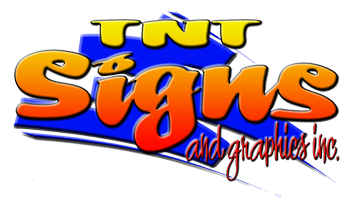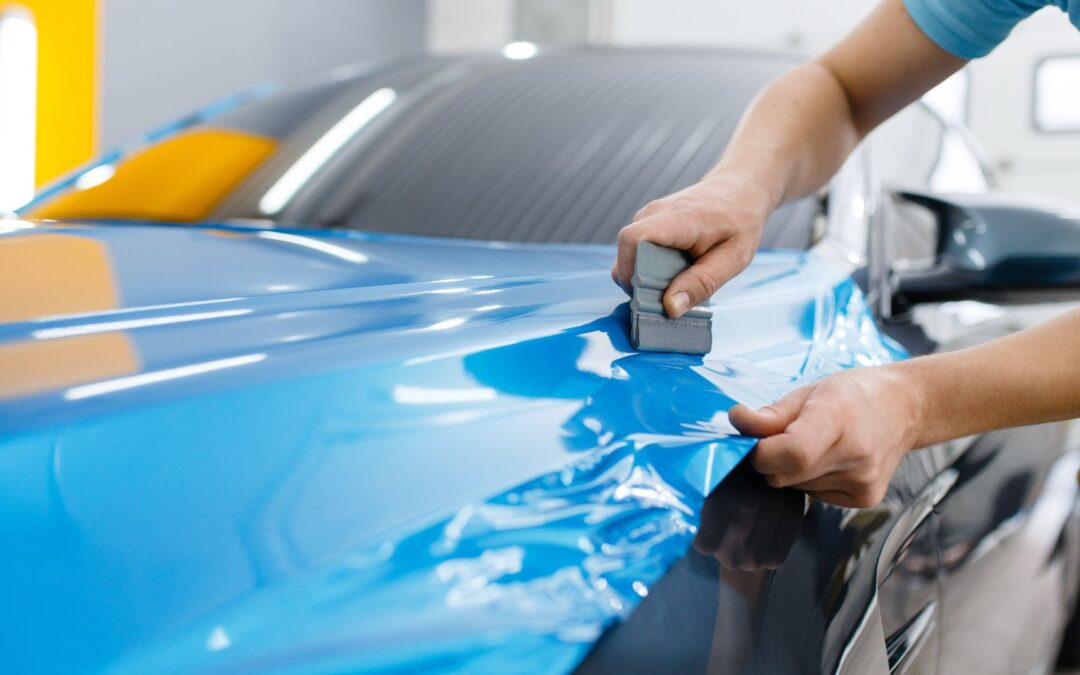In today’s fast-paced, visually-driven world, businesses are constantly searching for innovative ways to promote their brand and reach new customers. One of the most effective marketing tools available is the vehicle wrap. A vehicle wrap involves completely or partially covering a vehicle with vinyl material for advertising or promotional purposes. Whether it’s for small businesses or large corporations, vehicle wraps turn company vehicles into mobile billboards, attracting thousands of impressions daily. This blog will explore the vehicle wrap process, its benefits, the different wrap types, and why this form of advertising has gained popularity in recent years.
What is a Vehicle Wrap?
A vehicle wrap is the marketing practice of covering a vehicle’s surface with vinyl sheets printed with custom graphics, logos, and designs. These vinyl sheets can be applied over the entire vehicle (full wrap) or just a portion of it (partial wrap). The vinyl wrap adheres to the vehicle’s surface and can be easily removed without damaging the paint, making it a flexible and cost-effective advertising solution. Vehicle wraps are widely used on commercial vehicles, buses, light-rail trains, and even personal vehicles because they turn any vehicle into a moving advertisement.
The Growing Popularity of Vehicle Wraps
Traditionally, buses and light-rail trains were the most common platforms for vehicle wraps due to their flat, straight body styles, making the wrap application process easier. However, in recent years, businesses have recognized the potential of wrapping personal, work, and fleet vehicles. These vehicles serve as mobile billboards, traveling through different areas and attracting countless daily impressions. Think about NASCAR — companies spend large sums to place their logos on race cars because they know millions of people will see their brand each week. Your company’s vehicle wrap might not be on TV, but it will be seen by thousands of people as it moves around town.
Why Vehicle Wraps Are a Great Advertising Tool
Vehicle wraps provide businesses with a highly effective and budget-friendly way to promote their brand. Here’s why:
Cost-Effective Advertising
Compared to other forms of advertising like billboards or TV ads, vehicle wraps offer an impressive return on investment. The average cost-per-mile (CPM) for a vehicle wrap is just $0.77, according to the Outdoor Advertising Association of America. This is far lower than most traditional advertising methods. Additionally, vehicle wraps have the potential to earn between 30,000 and 70,000 impressions each day, providing massive exposure for a one-time cost.
High Recall Rate
Studies have shown that vehicle wraps have a significant impact on viewers. According to research by the RYP & Becker Group, 97% of people who saw vehicle ads remembered them, and 96% believed they were more effective than billboards. Vehicle wraps are eye-catching and memorable, ensuring that your brand stays top of mind for potential customers.
Full Control Over Your Ad Space
Unlike other forms of advertising, such as billboards or online ads where your business might compete for attention with other companies, vehicle wraps give you full control over your ad space. Your car or fleet is solely dedicated to your brand, and you can change the graphics as needed without worrying about competitors’ ads being displayed alongside yours.
Full vs. Partial Vehicle Wraps
When it comes to vehicle wraps, businesses can choose between full and partial wraps. Both options are highly effective, but the decision depends on your budget, design preferences, and advertising goals.
Full Vehicle Wrap
A full vehicle wrap covers the entire exterior of the vehicle, including the sides, rear, hood, and (where legal) the windows. Full wraps provide maximum visibility and create a striking, cohesive look for your brand. They are ideal for businesses that want to make a bold statement and have their vehicle stand out wherever it goes.
Partial Vehicle Wrap
A partial wrap, on the other hand, covers only a portion of the vehicle, usually the rear, hood, or sides. While partial wraps don’t offer as much coverage as full wraps, they are still highly effective at promoting your brand. With a well-thought-out design, partial wraps can seamlessly blend with the vehicle’s original paint, creating a polished and professional appearance. Partial wraps are often more affordable and allow for more flexibility in terms of updating graphics or advertising specific promotions.
Types of Vehicle Wrap Textures
In addition to choosing between full and partial wraps, businesses can also select different textures and finishes to further customize their vehicle wrap. The following are some popular options:
Carbon Fiber
Carbon fiber wraps are often used on the hood of the vehicle to create a unique, textured look. The material mimics the appearance of carbon fiber, giving the vehicle a sleek, high-performance aesthetic.
Vinyl Matte
Matte wraps are growing in popularity because of their modern, understated look. Unlike glossy finishes, matte wraps don’t reflect sunlight, giving the vehicle a smooth, flat appearance. Matte wraps are also less expensive than traditional matte paint jobs, and they are easy to remove when it’s time to update your vehicle’s look.
Vinyl Gloss
Gloss vinyl wraps have a shiny finish that makes the vehicle look like it’s freshly painted. These wraps are highly reflective and give a vibrant, polished appearance. Gloss wraps are ideal for brands that want their vehicle graphics to pop and attract attention.
Chrome
Chrome wraps are some of the most expensive per square foot, but they certainly make a vehicle stand out. The highly reflective, mirror-like finish of chrome wraps creates a dramatic look that turns heads and ensures your vehicle gets noticed.
The Vehicle Wrap Process
The vehicle wrap process consists of three key steps: design, fabrication, and application.
Step 1: Design
The design phase is where the creative process begins. At TNT Signs and Graphics, we start by taking accurate measurements of your vehicle and considering the design you want to display. Our team collaborates closely with you throughout the process, providing digital mockups that allow you to see exactly how the wrap will look on your vehicle. You can make adjustments, provide feedback, and steer the design to ensure it meets your brand’s vision.
Step 2: Fabrication
Once the design is finalized, the fabrication process begins. The design is printed onto vinyl sheets, which are then laminated to protect the wrap from UV rays, scratches, and environmental damage. Our team takes pride in delivering high-quality wraps that not only look great but also protect your vehicle’s paint from wear and tear. A well-maintained wrap can last up to seven years, and it can easily be removed when it’s time to update the design or sell the vehicle.
Step 3: Application
The final step is the installation of the wrap. Our expert technicians carefully apply the vinyl to your vehicle, ensuring a smooth finish without any bubbles, air pockets, or wrinkles. If your wrap covers windows, we use perforated vinyl that allows visibility from inside the vehicle. Once the installation is complete, your vehicle is transformed into a mobile billboard, ready to hit the road and promote your brand.
How Long Does the Process Take?
The installation of a vehicle wrap typically takes one to three business days, depending on the size and complexity of the wrap. During the design phase, we’ll provide you with a clear timeline so you’ll know when the project will be completed.
Estimating Costs
The cost of a vehicle wrap depends on several factors, including the size of the vehicle, the amount of wrap coverage, the complexity of the design, and the quality of the vinyl used. While the initial cost of a vehicle wrap might seem high compared to other forms of advertising, it’s important to consider the long-term value. Vehicle wraps are a one-time investment that continue to generate impressions and promote your brand for years.
Caring for Your Vehicle Wrap
To ensure the longevity of your vehicle wrap, it’s important to care for it properly. We recommend hand washing your vehicle with a non-abrasive sponge, soap, and water. Avoid using high-pressure washers, as the force of the water can damage the vinyl. Additionally, if your wrap covers windows, avoid using ice scrapers, as this can tear the perforated vinyl. With proper care, your wrap can last up to seven years.
Choosing the Right Vehicle Wrap Company
When it comes to vehicle wraps, quality matters. Choosing a reputable wrap company is crucial to ensuring a smooth process and high-quality results. At TNT Signs and Graphics, we’ve been helping businesses enhance their brand with custom vehicle wraps for years. Our team is dedicated to delivering high-quality work, from the initial design to the final application.
Why Choose TNT Signs and Graphics?
At TNT Signs and Graphics, we’ve been at the forefront of innovative signage and vehicle wraps since 1984. We’re passionate about helping businesses stand out with creative and effective solutions that promote their brand. Whether you’re looking to wrap a single vehicle or an entire fleet, our team will work with you to create a design that captures your brand’s essence and turns heads on the road.
Let us help you drive your business forward with a custom vehicle wrap that makes an impact. Contact us today to get started!

